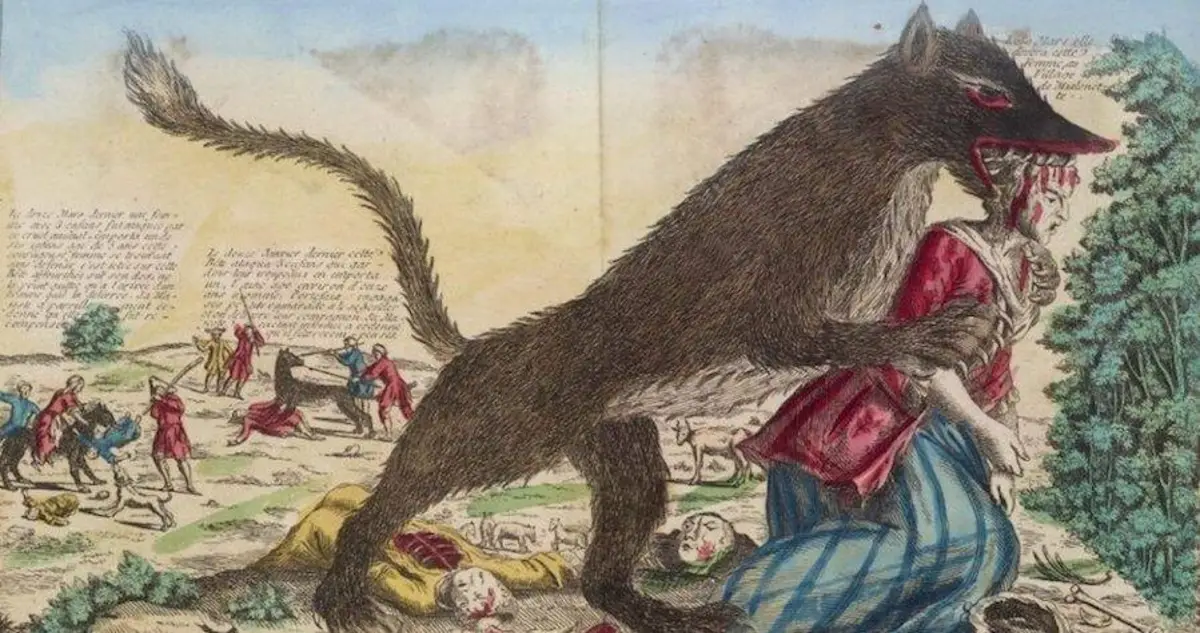Introduction
Overview of Skinwalker Dog Mythology
The legend of the skinwalker dog has intrigued and terrified people for centuries. Rooted in Native American folklore, particularly within Navajo culture, the skinwalker is a shapeshifter, often depicted as an evil witch who can transform into various animals, including dogs. Understanding the myth of the skinwalker dog is essential not only for appreciating the cultural stories passed down through generations but also for distinguishing between folklore and reality. This article delves into the origins, characteristics, and representations of skinwalker dogs, accompanied by visual interpretations, to offer a comprehensive view of this enigmatic creature.
What is a Skinwalker Dog?
Definition and Origin
The term “skinwalker” originates from the Navajo word “yee naaldlooshii,” which translates to “with it, he goes on all fours.” In Navajo culture, a skinwalker is considered a witch who can transform into, possess, or disguise themselves as animals. Among the various forms a skinwalker can take, the skinwalker dog is one of the most feared and recognized. This shape-shifting ability is believed to be acquired through malevolent practices, often involving breaking cultural taboos and the performance of dark rituals.
Folklore and Stories
Traditional stories about skinwalker dogs often highlight their evil nature. These creatures are said to roam the night, causing harm and instilling fear in those who encounter them. They are believed to possess incredible speed, strength, and an uncanny ability to evade detection. Many tales describe skinwalker dogs as harbingers of doom, capable of controlling minds and inflicting curses. The stories vary across different regions, with some versions portraying them as protectors of sacred spaces while others depict them as relentless pursuers of their enemies.
Characteristics of a Skinwalker Dog
Physical Appearance
Eyewitness accounts and folklore often describe skinwalker dogs as larger than ordinary dogs, with eyes that glow unnaturally in the dark. They are said to have an unsettling presence, frequently appearing shabby or worn, with an air of hostility that sets them apart from typical canines. Their physical form might bear unusual features, such as elongated limbs, unusually shaped paws, or an odd gait that betrays their supernatural nature. These descriptions, while varied, consistently emphasize an aura of otherworldliness and danger.

Behavior and Abilities
The behavior of skinwalker dogs is where the supernatural elements become most apparent. According to legend, these creatures possess abilities far beyond those of ordinary animals. They are said to move with lightning speed, making them almost impossible to catch or track. Skinwalker dogs are believed to have the power to hypnotize or mentally manipulate their victims, leading them astray or into danger. Some stories even suggest that they can mimic human voices, using this ability to lure people into traps. Their transformation abilities are central to their myth, allowing them to switch between human and animal forms.
Identifying a Skinwalker Dog
Signs and Warnings
Identifying a skinwalker dog can be challenging, given their shape-shifting abilities and the often subtle signs of their presence. However, several indicators are commonly mentioned in folklore. Unusual animal tracks that abruptly change from human footprints to canine paw prints are a classic warning sign. Reports of eerie, disembodied voices, especially those mimicking loved ones, are also associated with skinwalkers. Physical encounters often involve a sense of overwhelming dread or a feeling of being watched. Those who have seen skinwalker dogs describe them as having an unnatural appearance and behavior distinctly different from normal dogs.
Anecdotal Evidence and Reported Sightings
Numerous accounts from individuals claiming to have encountered skinwalker dogs exist. These stories often come from rural areas and indigenous communities where the legend of the skinwalker is most prevalent. One common theme among these sightings is the sudden appearance of a large, menacing dog that behaves in inexplicable ways—vanishing without a trace, showing no fear of humans, or exhibiting intelligence that seems almost human. While many of these accounts are anecdotal and lack scientific verification, they contribute to the enduring mystique of the skinwalker dog.
Skinwalker Dog Picture
Visual Representations
The visual representation of skinwalker dogs varies widely, reflecting the diverse nature of the stories and descriptions associated with them. Some images depict them as significant, black dogs with glowing red eyes, emphasizing their sinister nature. Others show them mid-transformation, capturing the blend of human and canine features that characterize their shape-shifting ability. Artistic interpretations often highlight their eerie presence and supernatural qualities, contributing to the fear and fascination surrounding them.
Collection of Skinwalker Dog Images
A collection of images purported to be of skinwalker dogs can be found in various online forums, folklore archives, and paranormal investigation sites. These pictures range from blurry photographs of what appear to be oversized dogs to more detailed drawings and paintings created by artists inspired by the legend. While some images are fiction, others claim to be authentic captures of these elusive creatures. Analyzing these pictures can be challenging, as distinguishing between factual and fabricated evidence often requires a skeptical and discerning eye.
Analysis of the Most Credible Pictures
Among the numerous images claimed to be of skinwalker dogs, a few stand out due to their clarity and the contexts in which they were captured. Some more credible pictures include those taken by hunters, hikers, or rural residents who report unexpected encounters. These images often show dogs that appear more prominent than usual, with unusual features or glowing eyes that match descriptions from folklore. However, even the most credible pictures require scrutiny, as photographic evidence can be easily manipulated.

Comparison with Real Animals
To understand what sets skinwalker dog images apart from those of real animals, it’s essential to compare them directly. No matter how large or unusual, real dogs lack the supernatural characteristics attributed to skinwalker dogs. Differences in eye color, size, and behavior are key factors. Additionally, natural explanations, such as optical illusions, lighting effects, and misidentification of known animals, must be considered. By contrasting skinwalker dog pictures with real animal photos, one can better assess the plausibility of these purported sightings.
Conclusion
Summary of Key Points
The legend of the skinwalker dog is a fascinating blend of cultural mythology, supernatural intrigue, and real-world mystery. Defined as shape-shifting witches capable of transforming into dogs, skinwalker dogs are steeped in Navajo folklore and have permeated popular culture. Their physical descriptions, behaviors, and abilities set them apart from ordinary animals, contributing to their fearsome reputation. Identifying a skinwalker dog involves recognizing specific signs and interpreting anecdotal evidence, while visual representations and photographic evidence provide further insight into this enduring myth.
Final Thoughts on the Myth
The skinwalker dog remains a compelling figure in folklore, symbolizing the intersection of human fear and fascination with the unknown. While scientific evidence for their existence is lacking, the stories and sightings persist, reflecting the legend’s deep cultural roots and psychological impact. Whether viewed as a cautionary tale, a cultural artifact, or a genuine mystery, the skinwalker dog continues to captivate and intrigue those who encounter its story.
Additional Resources
Numerous resources are available for those interested in delving deeper into the world of skinwalker dogs and related folklore. Books such as “The Navajo Skinwalker, Witchcraft, and Related Phenomena” by David M. Brugge provide a scholarly exploration of the topic. At the same time, online communities and discussion forums offer a space for sharing experiences and theories. Websites dedicated to paranormal investigations and folklore studies also provide information and further reading










































Leave a Reply